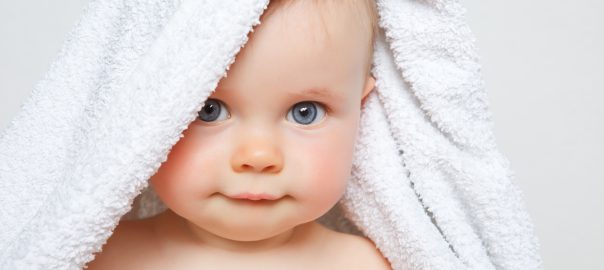Did you ever wonder what babies can see?
Newborns are able to recognize faces, large shapes and bright colors. By 4 months of age infants can focus on smaller objects and distinguish colors. In the first 6 months an infant’s eyes begin to work together to perceive 3 dimensional space. By age 1 an infant’s vision is very much like that of an adult.
When is an infant’s eye color established?
The color of a baby’s eyes and change in the first year of life – most rapidly in the first 6 months. By age 1 year eye color is generally well established.
How do I know if my baby is having trouble with their vision?
By 4 months of age infants should be able to follow objects as they move across their field of view and make steady eye contact. Infants less than 4-6 months will occasionally appear to have a lazy eye or look cross-eyed. This should not occur after this age.
If everything looks normal could there still be a problem?
Sometimes infants and toddlers have unequal vision with a strong eye and a weaker eye. If the difference is big enough the brain never develops the processing ability for the weaker eye. This is called amblyopia and is the most common cause of pediatric vision loss.
Can this be identified and treated?
Yes! If caught early in life (before age 5 and the earlier the better) corrective lenses will allow normal brain development. At the Fraser Medical Clinic, we recognize the importance of vision in pediatric care and have invested in Visual Photo-Screening to help us identify common eye problems in problems in infants and toddlers. Screening is as simple and painless as taking a picture.
For the right child, early recognition can be vision saving!





